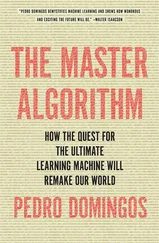A chapter of DEC’s official history, a technical work that the company published, describes the making of a computer called the PDP-8. DEC sent this machine to market in 1965. It was a hit. It made DEC’s first fortune. The PDP-8, says the official history, “established the concept of minicomputers, leading the way to a multibillion dollar industry.” But the book doesn’t say that Edson de Castro, then an engineer in his twenties, led the team that designed the PDP-8. The technical history mentions de Castro only once, briefly, and in another context. They expunged de Castro.
In 1968 de Castro and two other young engineers seceded from DEC. Several completely different versions of their flight exist and have by now acquired the impenetrable quality of myth. Did they quit because, after long and heartfelt labor on a new design, they found that DEC’s management would not build their new machine? DEC’s management did turn down a new design of de Castro’s, and afterward, along with a man from another company named Herb Richman, de Castro and the two other engineers from Digital incorporated Data General and started building their own minicomputer. But did they design this new machine after they seceded, or had they done that job in secret, using DEC’s facilities, while still on DEC’s payroll? One version of the story suggested the latter. More than ten years later, DEC’s founder and president would tell reporters from Fortune , “What they did was so bad we’re still upset about it.” But DEC never sued Data General’s founders, and clearly there were other reasons why Digital might have become upset. For within a year, de Castro and company had set up shop in DEC’s own territory and had started raking in the loot.
They rented space in what had been a beauty parlor, in the former mill town of Hudson, Massachusetts. Practically all that remains of that time is a black-and-white photograph of this first headquarters. In the foreground stand four young men with short hair, wearing white shirts and skinny ties and the sort of plain black shoes that J. Edgar Hoover’s men favored. They are engaged in what is obviously meant to look like routine conversation. The linoleum floor, the metal furniture, evoke motor vehicle departments, and the youths in the picture could be members of some junior chamber of commerce, playing capitalists for a day. Not shown in this bemusing picture is the shrewd and somewhat older lawyer from a large New York firm who helped Data General’s founders raise their capital and who became a crucial member of their team. What also doesn’t show is the fact that some of these young men were already computer engineers of no mean repute—their age in this case was no impediment, for computer engineers like athletes often blossom early.
They started Data General at an auspicious time. In the late 1960s, the period memorialized in John Brooks’s The Go-Go Years , venture capital (among other things) abounded, and although they started out with only $800,000, more lay in reserve. They also entered a good territory for fledglings. They could not have dreamed of moving in on IBM’s markets without truly vast amounts of capital. But the people who bought minicomputers—engineers, scientists, and, mainly, purchasing agents of OEMs—understood the machines. A new manufacturer could reach them through relatively inexpensive ads in the trade journals, and didn’t need to build a service organization right away, since these customers could take care of themselves. These were also the sorts of customers who could be expected to embrace a newcomer, if the price was right; they’d prefer a bargain to a brand name.
But around the time when Data General established itself in the beauty parlor, other entrepreneurs were starting up minicomputer companies at the rate of about one every three days. Only a few of those other new outfits survived the decade, whereas Data General, before it had exhausted its first and fairly modest dose of capital, achieved and never fell from that state of grace, a positive cash flow. Why?
The company’s first machine, the NOVA, had a simple elegance about it that computer engineers I’ve talked to consider admirable, for its time. It had features that DEC’s comparable offering didn’t share, and it incorporated the latest, though not fully proven, advances in chips. Data General could build the NOVA very cheaply. Such an important advantage can depend, in computers, on small things. In the case of the NOVA, the especially large size of the printed-circuit boards—the plates on which the chips are laid down—made a crucial difference. For several reasons, large boards tend to reduce the amount of hardware in a computer. Data General used boards much larger than the ones that DEC was using. Speaking of this difference and of other less important ones, one engineer remarked, “The NOVA was a triumph of packaging.”
Good machines don’t guarantee success, though, as RCA and Xerox and others had discovered. Herb Richman, who had helped to found Data General, said, “We did everything well.” Obviously, they did not manage every side of their business better than everyone else, but these young men (all equipped with large egos, as one who was around them at this time remarked) somehow managed to realize that they had to attend with equal care to all sides of their operation—to the selling of their machine as well as to its design, for instance. That may seem an elementary rule for making money in a business, but it is one that is easier to state than to obey. Some notion of how shrewd they could be is perhaps revealed in the fact that they never tried to hoard a majority of the stock, but used it instead as a tool for growth. Many young entrepreneurs, confusing ownership with control, can’t bring themselves to do this.
When they chose their lawyer, who would deal with the financial community for them, they insisted that he invest some of his own money in their company. “We don’t want you running away if we get in trouble. We want you there protecting your own money,” Richman remembered saying. Such an arrangement, though not illegal, might raise some eyebrows in some corners of the Bar Association. But the lawyer said, again according to Richman, “That’s the first time anyone made an intelligent proposition to me.” Richman also remembered that before they entered into negotiations over their second public offering of stock, after the company had been making money for a while and the stock they’d already issued had done very well indeed, their lawyer insisted that each of the founders sell some of their holdings in the company and each “take down a million bucks.” This so that they could negotiate without the dread of losing everything (“Having to go back to your father’s gas station,” Richman called that nightmare). As for the name of the theory behind selling enough stock to become millionaires, Richman told me, “I don’t know how you put it in the vernacular. We called it the Fuck You Theory.”
In the computer business, your market can be your fate. Although by the late 1970s it was hard to define a company’s place in the industry by the sorts of machines that it made, certain broad historic distinctions in ways of doing business still divided a large part of the industry into three segments. The differences showed up in the nature of a company’s expenditures. IBM and other mainframe companies spent more money selling their products and serving their customers than they did in actually building their machines. They sold their computers to people who were actually going to use them, not to middlemen, and this market required good manners. Microcomputer companies sold equipment as if it were corn, in large quantities; they spent most of their money making things and competed not by being polite but by being aggressive. Minicomputer companies split the differences more or less; they sold some machines and service to actual users, but spent most of their money on hardware and did a big business by selling machines in quantity to OEMs.
Читать дальше











